Are you looking for the best banana tree care? Probably by now, you know that banana trees (also known as herbaceous plants) are some of the most popular trees. Our love for the banana fruit has actually led many people to grow their own banana trees.
Optimal banana tree care requires moist, fertile soil and 8 – 12 hours per day of sun. Apply 6-2-12 fertilizer; higher nitrogen is needed for optimal fruit production. Water weekly, ensuring good drainage to protect root rot. The Dwarf Cavendish is a popular indoor banana tree variety.
But if you haven’t tried growing a banana tree, then you should know that it’s extremely easy to grow your own banana tree, even if you live in an apartment. Do you know how to give the best banana tree care, even indoors? No? Well, then I’m glad you are here because I’m going to tell you everything you need to know about banana tree care.
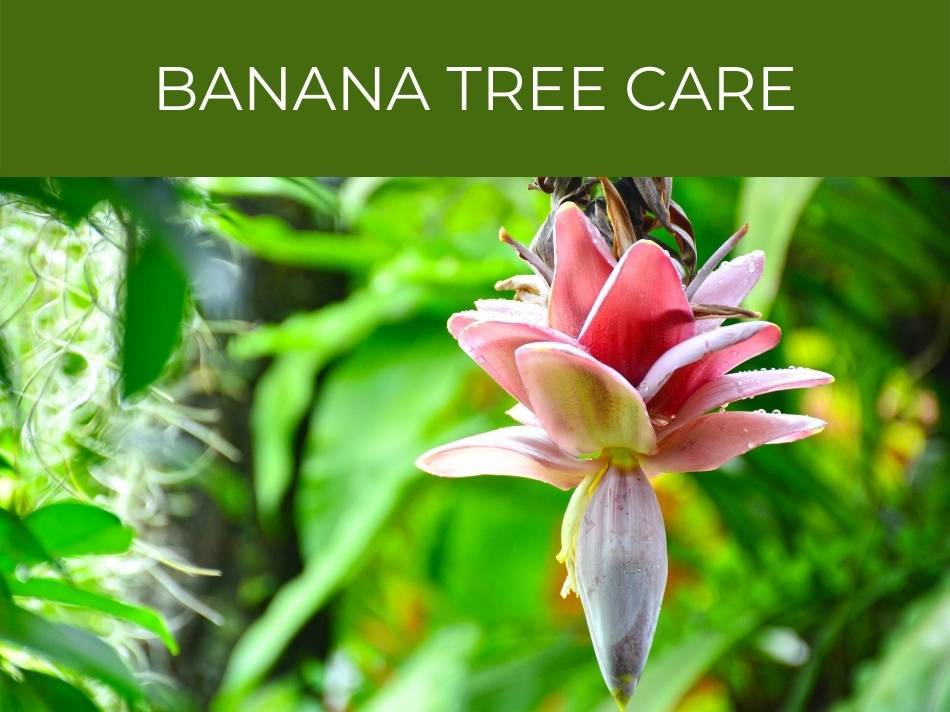
Banana Tree Care
I can’t emphasize how crucial banana tree care is when trying to grow your own banana tree.
As you know, banana trees are tropical plants, meaning that you can’t grow one without 3 vital elements; sun, warmth, and, of course, water.
But do you know how much sunlight banana trees need?
Or how many times should you water your banana tree?
Banana trees are very hungry plants, meaning you need to know the basics of banana tree care if you want to grow a healthy tropical plant.
But if you aren’t familiar with the art of growing your own bananas, keep reading because we are about to change that!
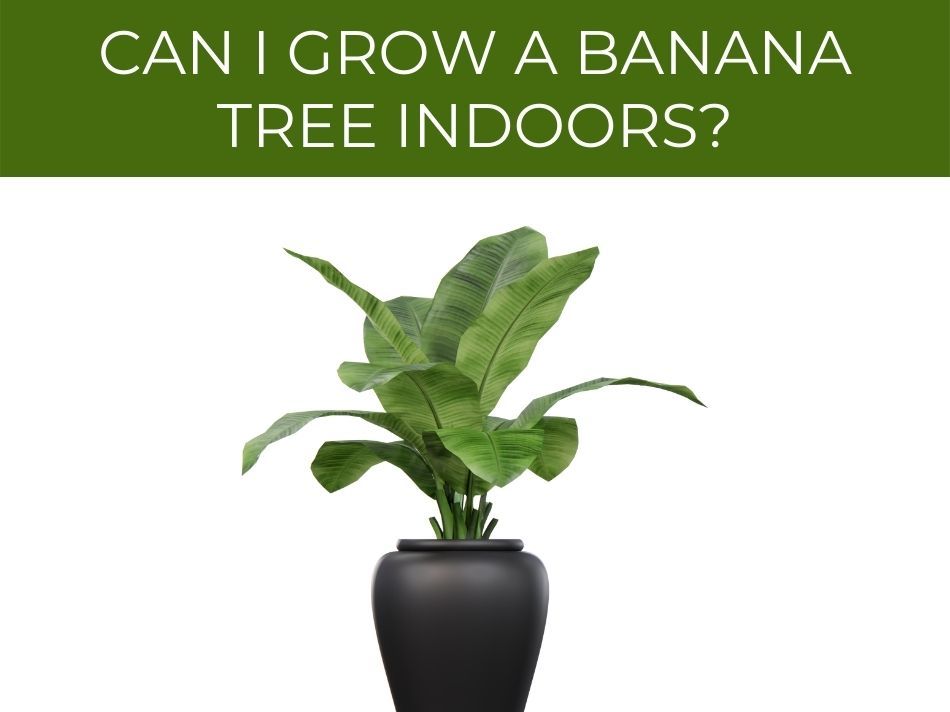
Can I Grow a Banana Tree Indoors?
Yes, you can definitely grow a banana tree indoors!
However, because banana trees can get rather big, it’s important to consider which type of banana tree to grow (below I’ll mention one of the best banana trees to grow indoors, so keep reading).
But before that, here’s what you should consider when thinking about growing a banana tree indoors:
Picking the right variety of banana tree
Before anything else, you should decide which type of banana tree is the best option for you.
It’s important to remember that there are a lot of different varieties of banana trees available.
There are plenty of varieties to choose from, which include anything from dwarf to full-sized banana trees.
Your banana tree needs sunlight
One of the most important things that you need to know when getting a banana tree is that you will need a lot of sunlight.
For most banana trees, you will need to supply your banana tree at least 12 hours of indirect sunlight every day.
Any less will potentially affect the growth, so you should keep this in mind when choosing the right place for your tree.
Your banana tree needs the right temperature
Banana trees are tropical, and like most tropical plants, they need a combination of warmth and humidity.
As you can imagine, those beautiful trees don’t like the cold that much, so you would need to consider that the temperature around your banana tree can’t drop under 65° F or its growth will be affected.
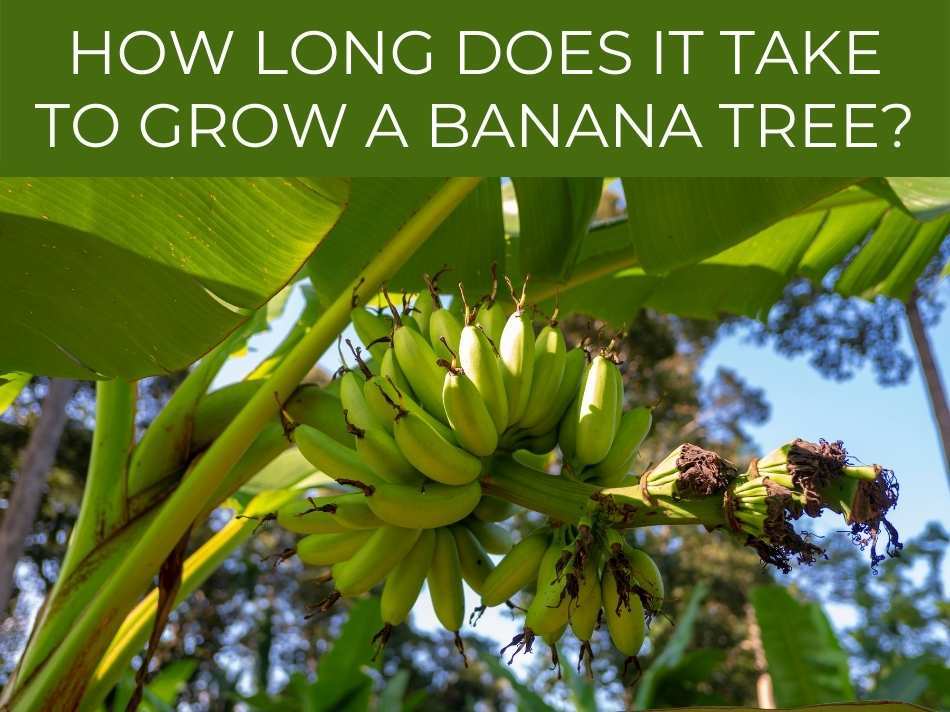
How Long Does it Take to Grow a Banana Tree?
Banana trees rise from underground rhizomes (which are aligned, moist clumps below the soil with many joints that come up the surface to grow as new banana stems (also called pseudostems).
Did you know that it can take up to 18 months for a banana tree to start producing any flowers?
Yes, and after that, it can take another four months for the fruits to mature.
However, the time that it takes to grow a banana tree will vary, as it will ultimately depend on how long it absorbs sunlight and the temperature as well.
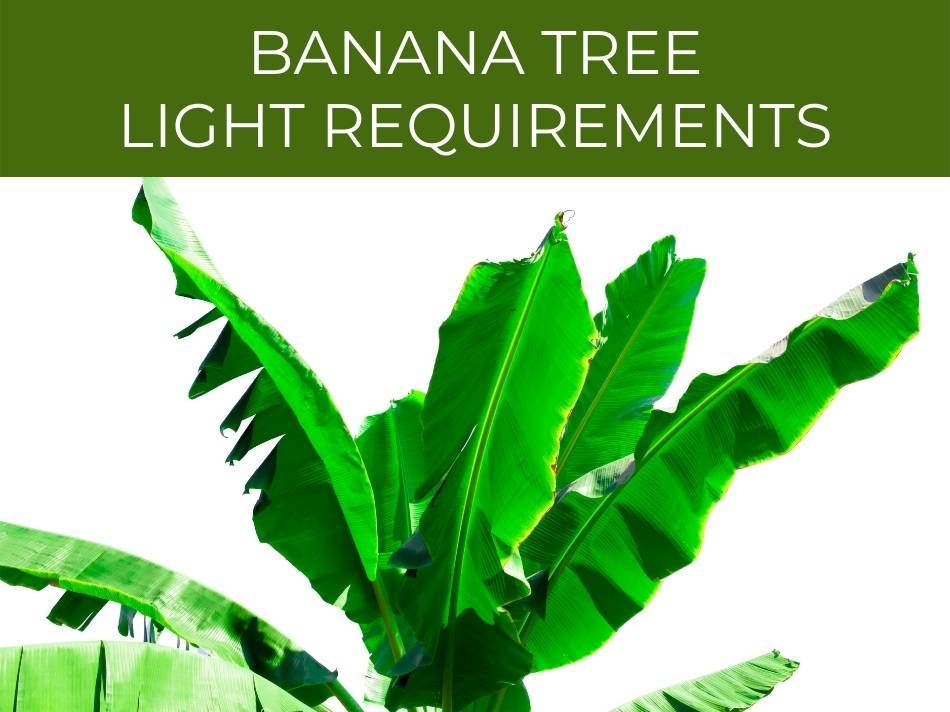
Banana Tree Light Requirements
Banana trees enjoy the sunlight, and when you choose to grow your banana tree indoors, you will need to provide it with a lot of sunlight (fully or indirectly), for at least more than six hours a day.
So, if you can put it on or close to a south-facing window, that would be the best option.
Outdoors, banana trees are able to grow under full sun exposure if humidity is above 50%, and they are watered very often.
Because even though banana trees love the sun and warmth, too much warmth and dryness will actually damage their leaves.
Banana trees flourish their best in temperatures between 80°F and 95°F, and if your banana tree is exposed to temperatures under 57°F, its growth will be extremely affected.
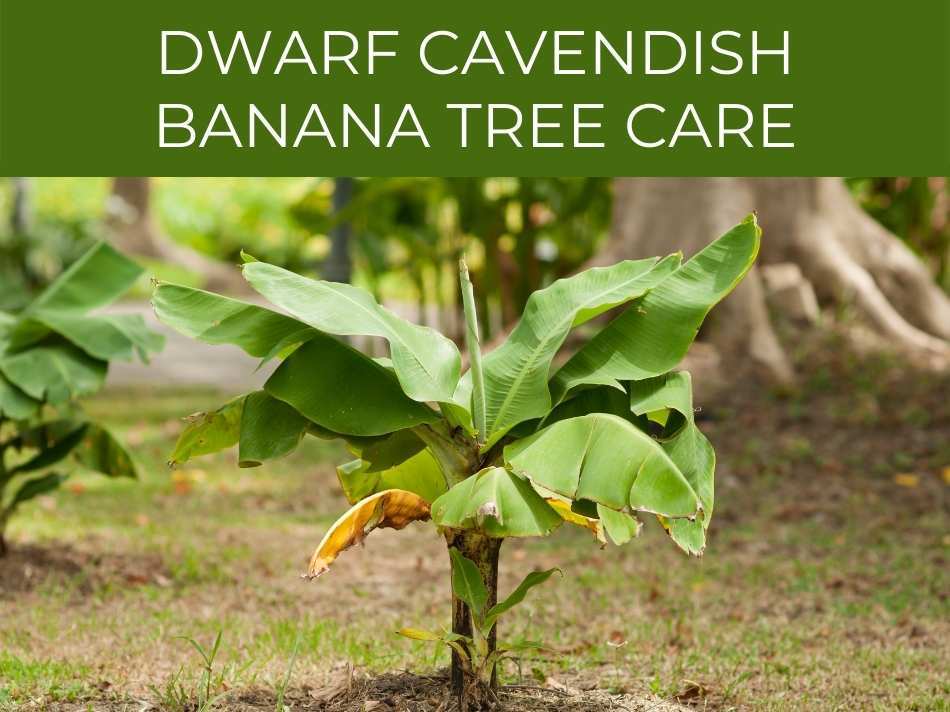
Dwarf Cavendish Banana Tree Care
Did you know that banana trees have many varieties, and even dwarf banana trees?
You’ll want to check out our complete guide to dwarf banana trees.
The dwarf Cavendish banana tree is a small stalk of around eight to ten feet high.
On this banana tree variety, its young leaves are purple or red, which become green as they mature and start creating larger flowers.
Here are some of the things that you should consider when choosing a Dwarf banana tree:
How much sun does a dwarf Cavendish banana tree need?
The perfect location for a Dwarf Cavendish would be anywhere with a good source of direct sunlight.
This could be a room with access to a sunny window.
Yes, a banana tree can still survive below partial sunlight.
However, that would mean that its growth could be affected.
What type of soil does a Dwarf Cavendish banana tree need?
Dwarf Cavendish banana trees thrive on well-drained loamy soil, and this is easily attainable when mixing sand, silt, and a little bit of clay.
How much water does a Dwarf Cavendish banana tree need?
Banana trees usually need about 4 to 6 inches of water every month (which makes it approximately 1 to 1 1/2 inches of water per week).
A simple technique to find out if your banana tree needs water is to see if the first 5-10 cms of soil are not moist.
You can do this by sticking your finger into the soil and if the soil is dry by the length of your finger, then your banana tree needs water.
The water should reach your tree’s roots.
However, it’s important to have drainage holes in your pot to prevent root damage.
Overwatering is the main reason why plants die, so you need to ensure that your banana tree doesn’t sit on extra water for days.
So it’s wise to allow your banana tree to sit on water for no more than 30 minutes and then throw the extra water away.
Dwarf Cavendish fertilizer requirements
Having fertilized soil (every two months with a 6-2-12 fertilizer).
This kind of fertilizer includes 6% nitrogen, 2% phosphorus, and 12% potassium.
Higher concentration of nitrogen helps your banana tree to have higher fruit production.
You should add the fertilizer right before watering so that the nutrients get to the cavendish root system faster and effectively.
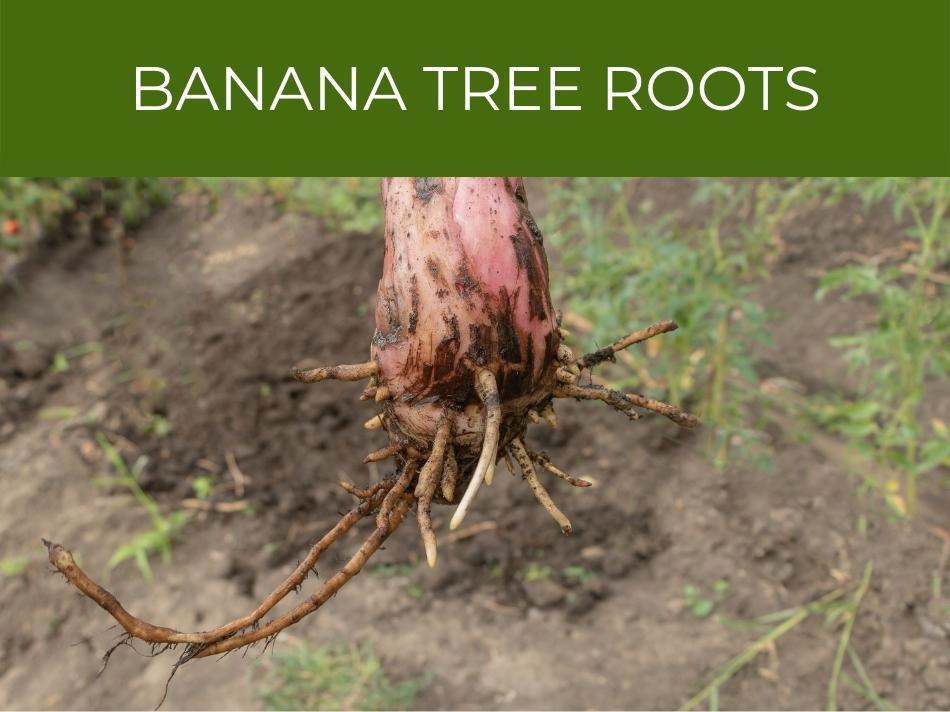
Banana Tree Roots
The root system of banana trees starts as a single rhizome that spreads into multiple streams, which produce new plants to substitute the dying main plant after the harvester.
Even though the average banana tree’s lifespan varies from 15 months to two years, the life of the rhizome can go up to 25 years.
Banana Tree Pruning
To keep your banana tree alive, you will need to cut old leaves so the plant can flourish.
The most suitable time to prune is, of course, after the harvester.
After collecting its fruits, you should prune the yellow and unhealthy leaves (starting from the outer side of the banana tree).
And after you are done with the outer leaves, you can move slowly towards the inner leaves. But remember not to touch the main stalk, and, of course, to use a clean knife or some type of blade to prune your banana tree to avoid contamination.
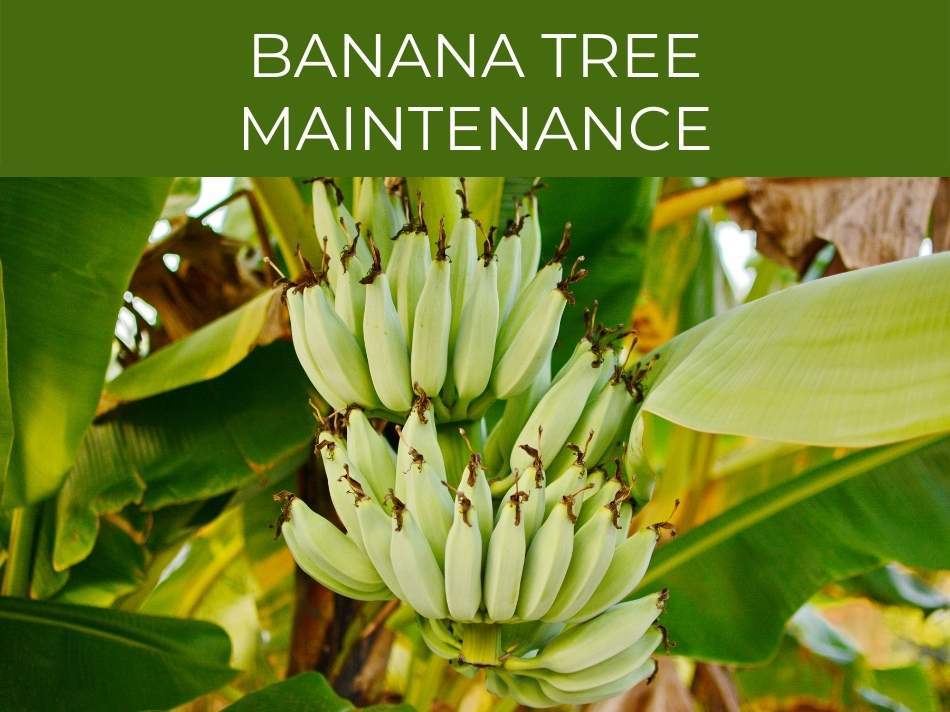
Banana Tree Maintenance
Now that you understand more about how banana trees grow, it’s time to recap what are the most important things to remember when maintaining your banana tree.
Here are the most important things to remember when looking for your banana tree maintenance:
- A banana tree will usually need around 12 hours of sunlight every day. This may sound like a lot, but the more sun, the better your banana tree will produce.
- Throughout the growing season, you should remember to fertilize your banana tree every couple of weeks. When choosing a fertilizer, you should consider one that has low nitrogen, but high potassium, which will help you with fast-growing growth.
- Pay attention to your banana tree leaves, as this will let you know about your banana tree health. If you happen to see some sun damage on your banana tree leaves, it’s important to protect them from further damage. You can do this by placing a posted canopy over those leaves (you can only remove it, once you have noticed that those leaves have healed).
- You should water your banana tree every three to four days on average (also depending on your type of tree and how much sunlight it gets, as well as its temperature. But be careful not to over water it. If the leaves of your banana tree turn brown and dry at the ends, it can mean that you water your banana tree too much.
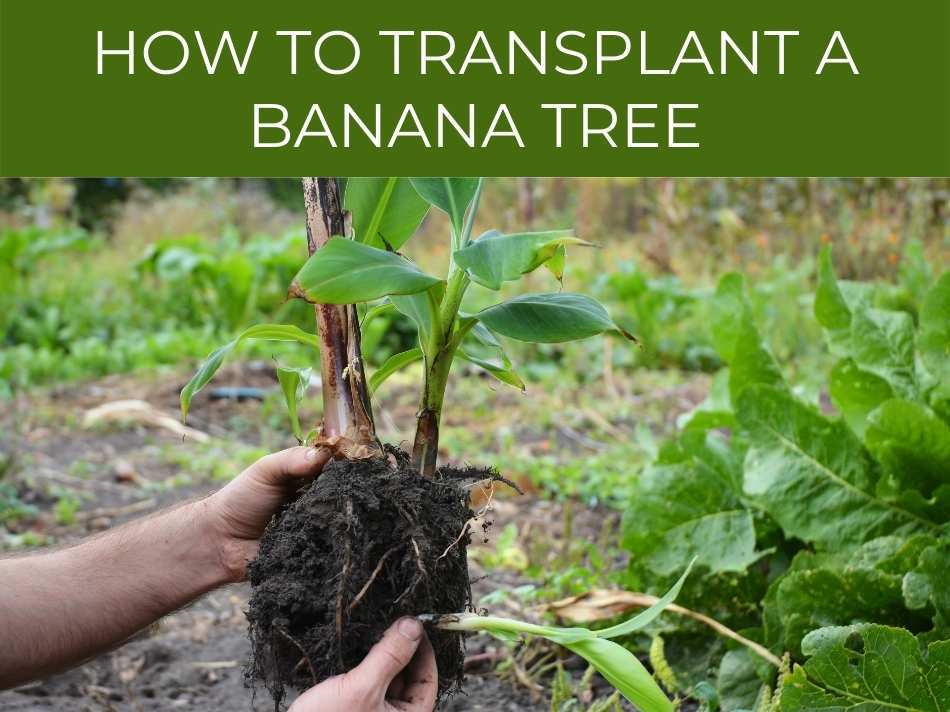
How to Transplant a Banana Tree
In case you need to move your banana tree to a different pot or container, it’s important to do it in a delicate way to avoid damaging its roots.
Here’s an easy guide to follow when transplanting a banana tree:
1. Water your banana tree by filling your banana tree container or pot 24 hours before transplanting it. This will help the roots to be more flexible when untagging them.
2. Wash the new banana tree well and let it dry completely, so the soil won’t stick to it. You should also remember to wash the scissors or any tools that you may use.
3. Next, you will need to prepare the soil. One of the best mixtures for banana tree soil will include; mixing one part of potting soil, another one part of perlite, and two parts of peat moss. And finally, you can add one quart of bonemeal (for every eight gallons of soil mix). This great mix will retain moisture, drain any excess well and absorb a lot of organic ingredients. You can then fill the new banana tree pot halfway with this mix.
4. Then, you can remove your banana tree from its old pot. It can do this by tipping the pot onto its side and carefully removing the banana tree. You will need to loosen the center of the roots that may be curled up in a circle. You can also cut away any dead roots with scissors.
5. Now you will be able to place the banana tree in the new pot and then fill it with the remaining soil mix. You should fill your new pot up to half an inch from the pot rim. And don’t forget to firmly tighten the soil mix around the roots, leaving no space for air pockets. After you are happy with it, you can then water it and place it on your chosen spot (not forgetting that your banana tree will need sunlight every day).
Check out our complete guide to transplanting.
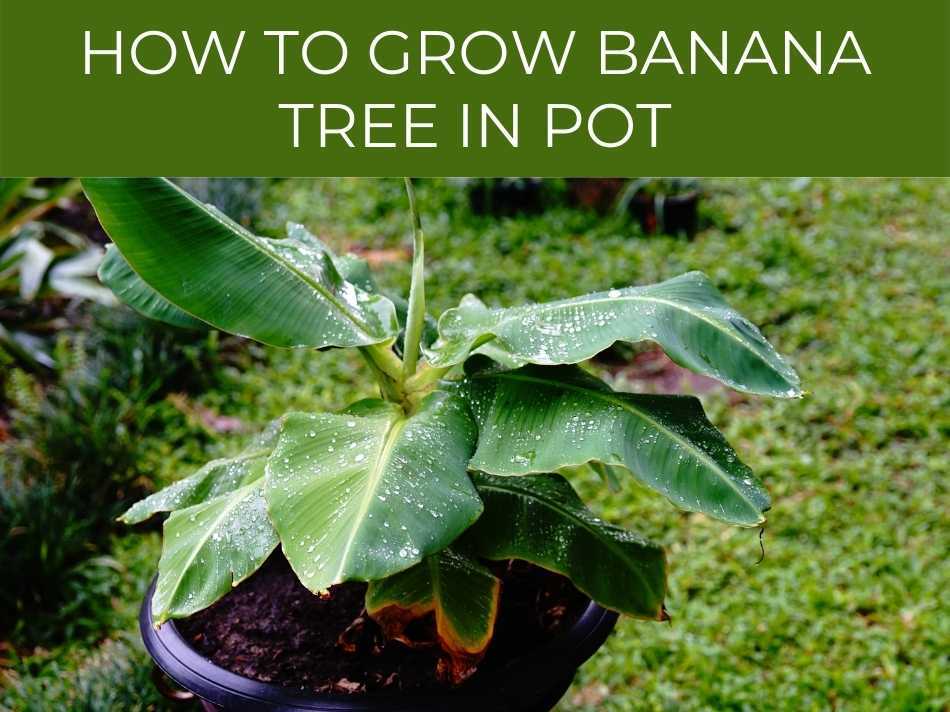
How to Grow Banana Tree in Pot
Yes, it’s more than possible to grow a banana tree in a pot or container, but you should keep in mind to get one that includes holes, so it can drain any excess water.
If you are planting your banana tree from seeds, then here’s what you should do:
How to plant a banana tree in a pot?
- Soak the seeds in warm water between 24 to 48 hours (to break their dormancy).
- Plant the seed in a small container or pot until you begin to see the seedling surface (this can take between two to three weeks).
- Keep your pot or container in a spot where it will be exposed to sunlight. And keep the soil moist, but don’t overwater it.
- When needed, transplant seedlings into a new pot
- Place your pot in a sunny place with low wind.
- Water your banana tree often, but don’t overwater.
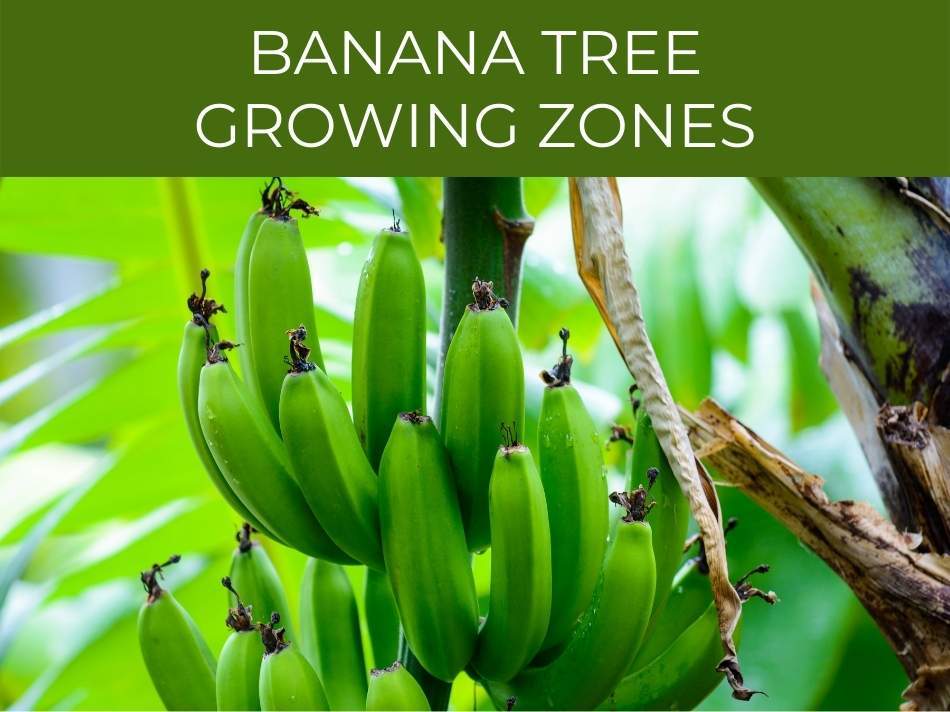
Banana Tree Growing Zones
Most bananas that you buy from stores are usually grown in tropical places such as Hawaii, as the banana tree is a tropical tree and loves the warm weather, known for being the perfect environment for this type of tree.
The growing zones that are perfect for growing banana trees are USDA zones 9 to 13. However, it’s possible to grow in USDA zones 9 to 11. If you like in the middle section of the US–for example Kentucky–check out our complete growing zones article.
But you will need to be extra careful and watch your banana tree well.
The hardest zones to grow will be zone 4. Not impossible, but incredibly challenging to grow a banana tree in this area.


